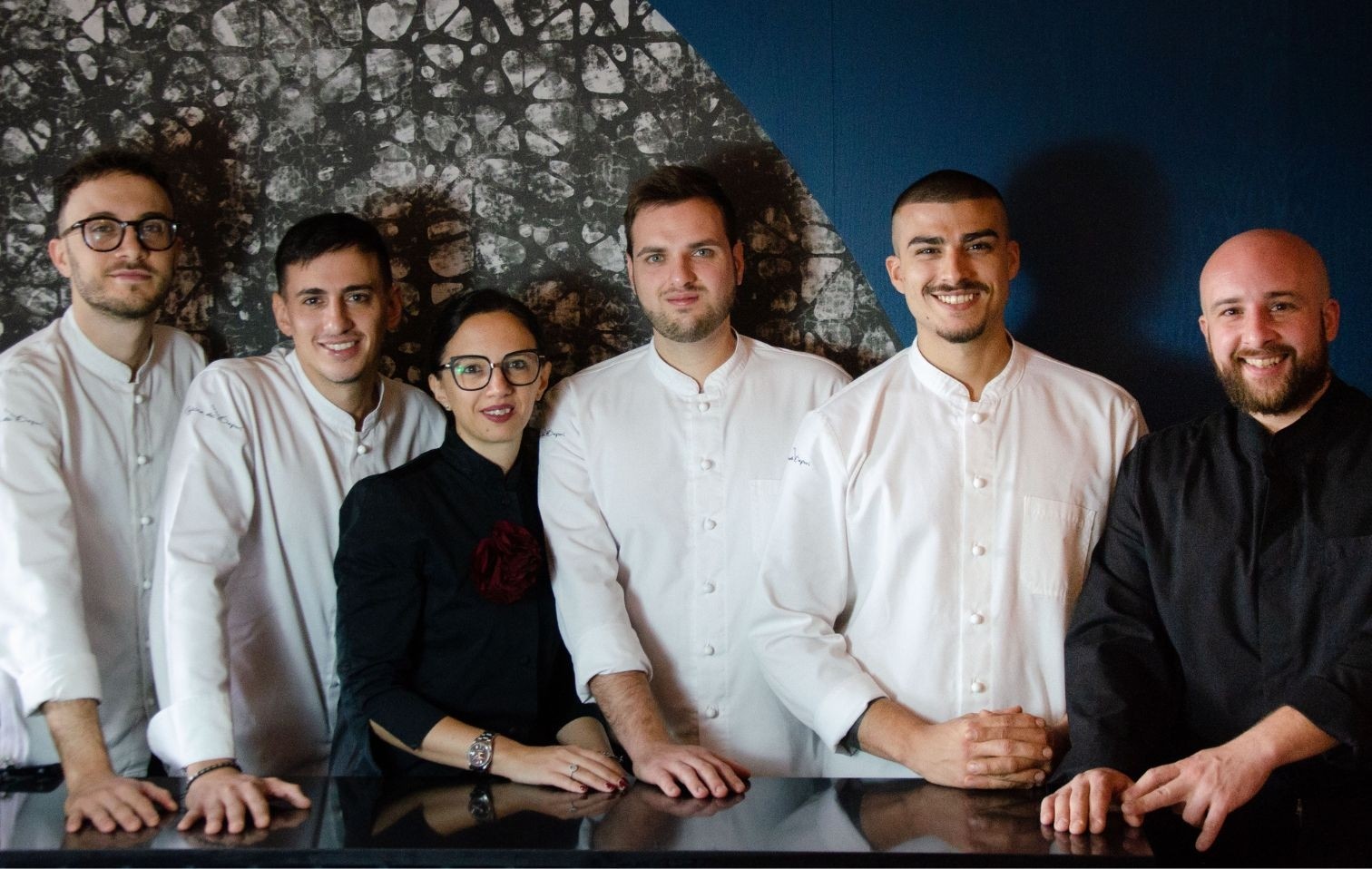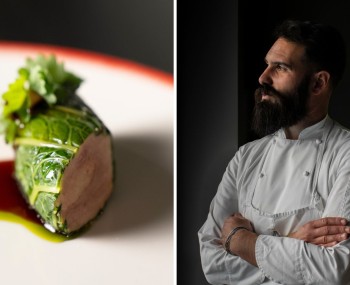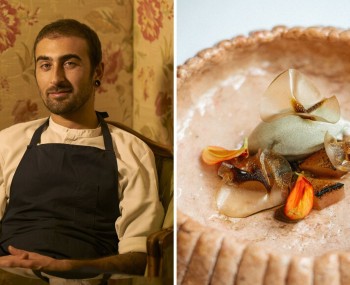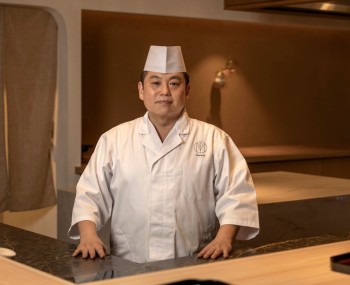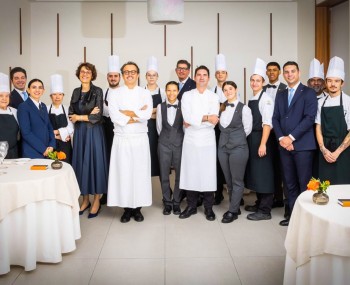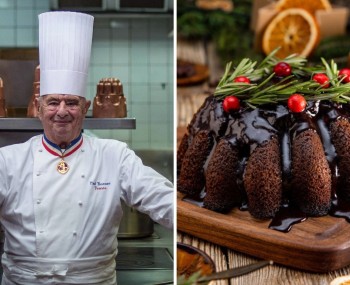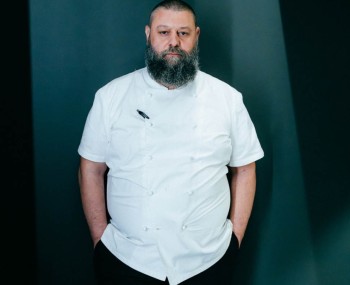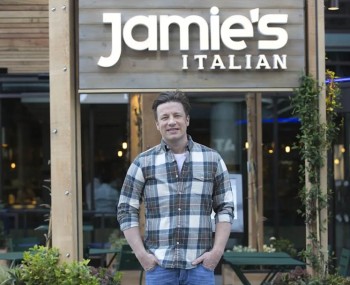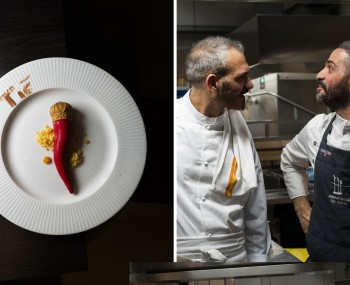From the outside, the sign hints at the style of quaint traditional inns, but inside, it's a modern "aquarium" where contemporary cuisine swims freely. Officina dei Sapori breaks the circle of culinary predictability in Gubbio, thanks to two brothers passionate about the craft and a young team of 30-year-olds.
In Italy, there's a statistical rule that transcends regional boundaries: wherever you live, at least one family-run restaurant will shine on the podium of your best gastronomic selections. Not a musty tavern with a menu as faded as its old wallpaper, nor a fake gourmet spot that uses sweetbread for a trendy revival of organ meats; we're talking about tables as solid as the walls surrounding them, cemented by a bond of affection and lived experiences that make you feel at home from the moment you walk in.
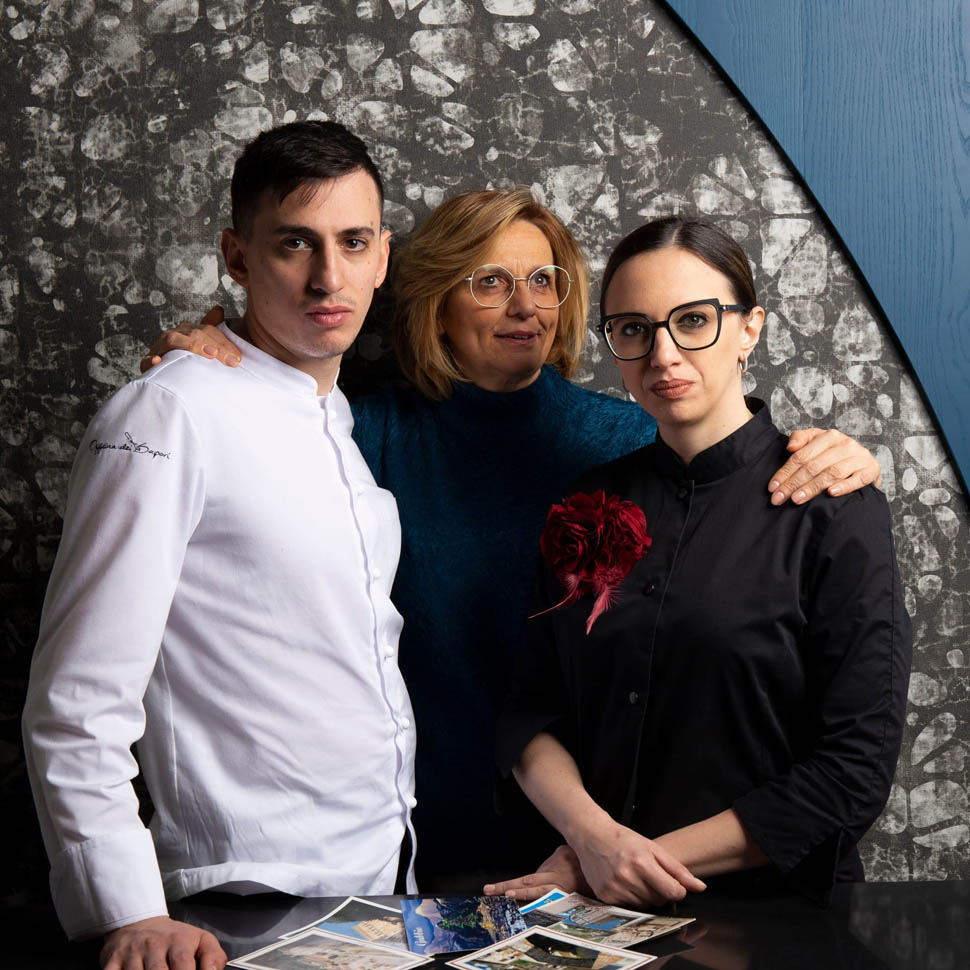
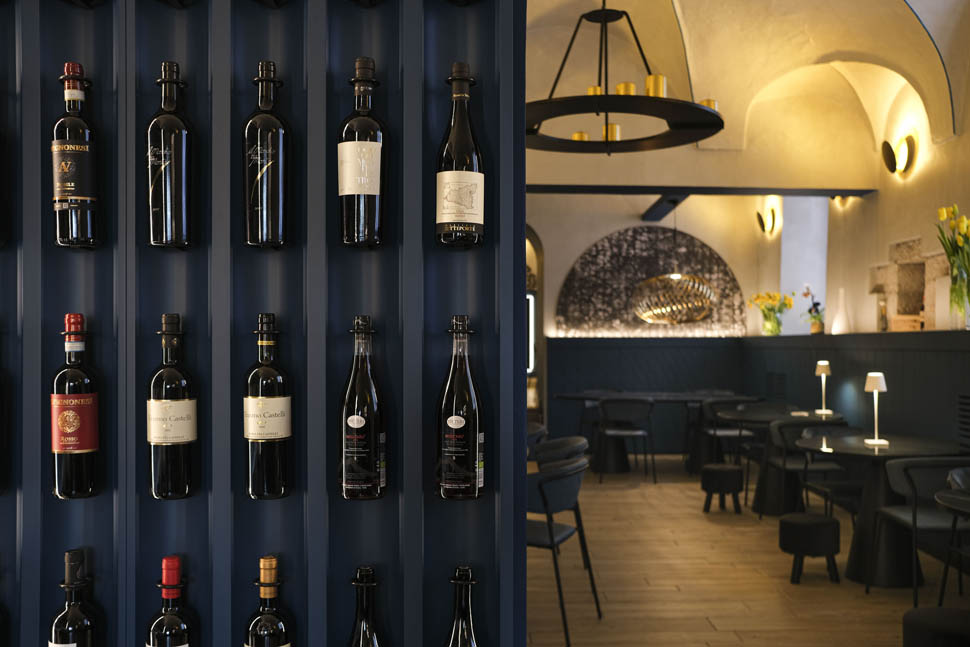
If you're lucky, that particular address will offer a peaceful generational turnover, with the best of the younger generation taking over from the veterans, without any "family feud" drama. In Gubbio, there's a place just like that, except a dinner there is worth twice as much. Why? Because Officina dei Sapori has never separated new ambitions from the deep-rooted traditions that make it what it is: a "home" that's flashier than you'd expect, yet still filled with authentic aromas, secretive glances, and skills honed side by side. Truly homemade, far beyond the sugary narratives of social media and the race for likes.
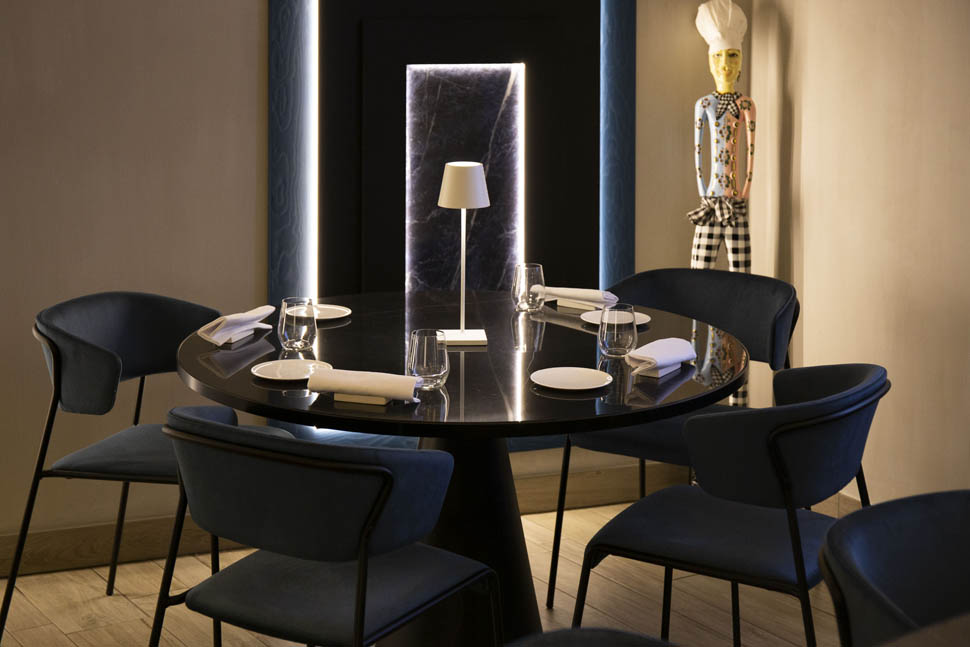
The story
Children of the trade, yet masters of their own fate. Giacomo and Veronica Ramacci—raised by their father Claudio, one of the most respected chefs in the area, and their mother Manuela, an emblem of hospitality—consciously choose not to rest on their laurels: it's too easy to simply follow in their parents' footsteps.
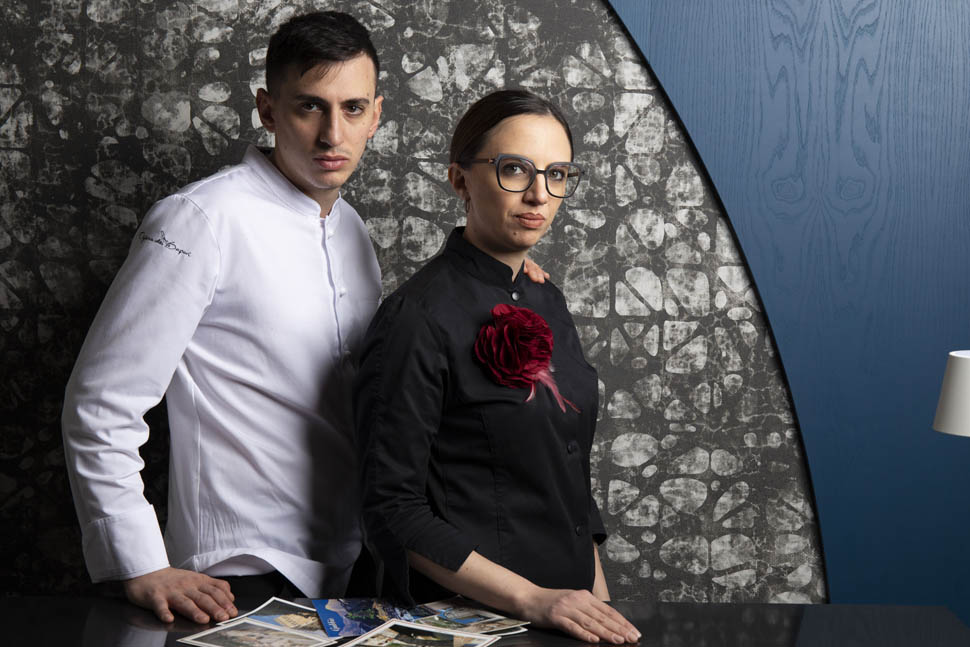
So Giacomo returns from London and independently assembles a team of young talents under 30, while Veronica sets up a wine bar with a strong focus on regional highlights. It's 2015 when Officina dei Sapori makes its debut, with him working pots and pans, and her managing glasses and inventories. We'd be lying if we said that their synergy didn't matter: their genetic complicity often emerges during service, proving that DNA does play a role.
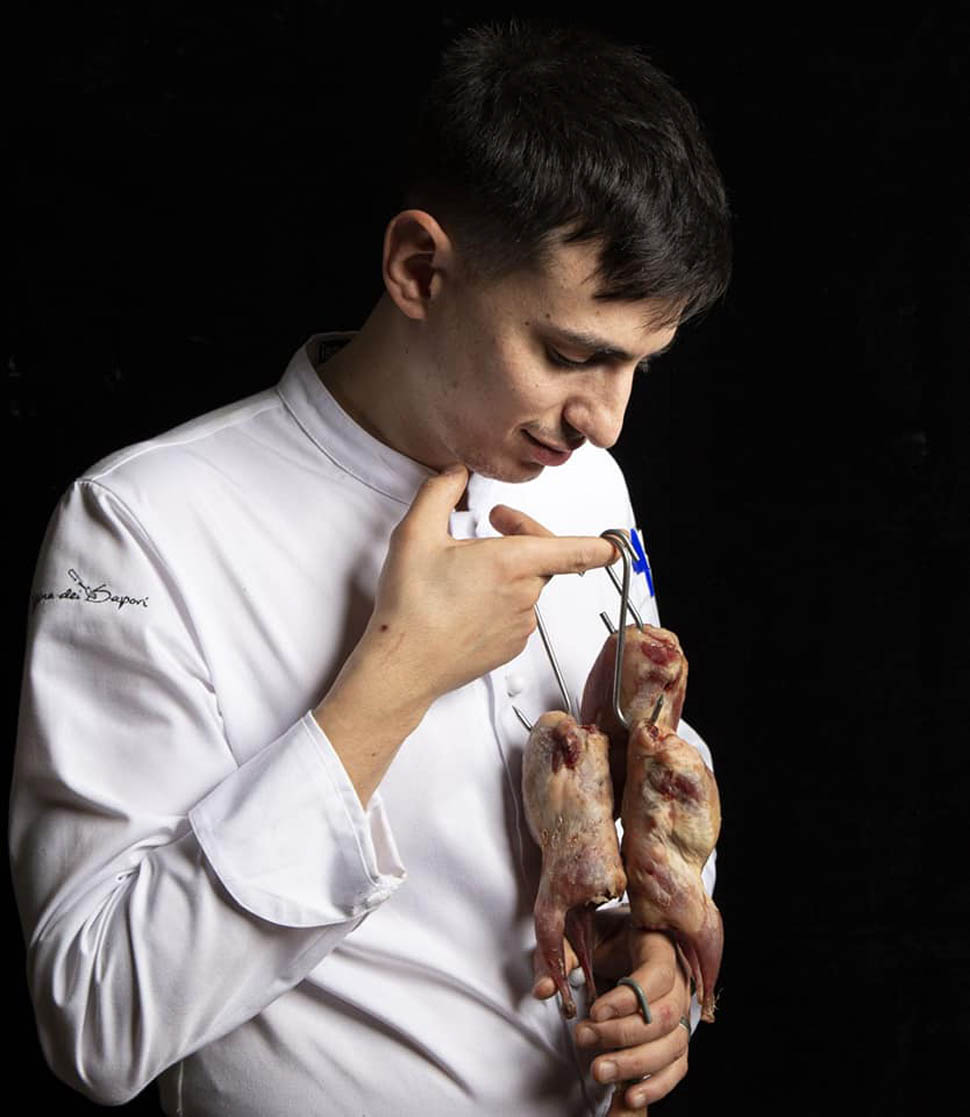
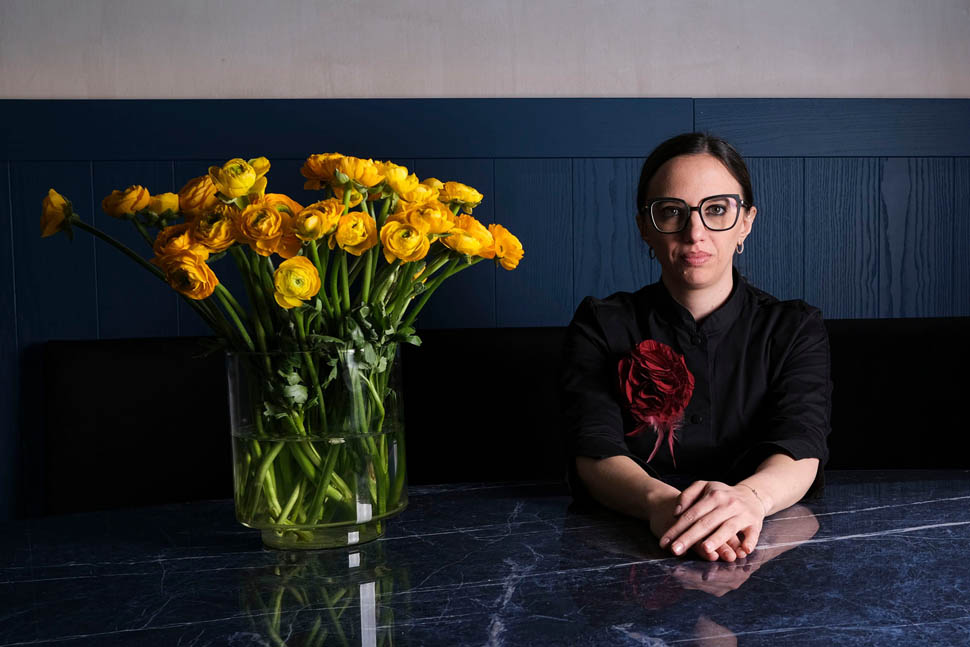
After all, the Ramacci family has long presided over a small constellation of establishments in Gubbio, from the Hotel Gattapone (an independently run property known for its strategic location) to the Taverna del Lupo, where Claudio served as executive chef for 40 years. The duo starts here and shapes a double-sided dining model: if you want instant comfort, you opt for the Norcineria (with its selection of cheeses, pickled vegetables, and cured meats served with Gubbio's crescia flatbread), or for a shared tasting of meats from naturally raised animals (with a variety of options, from Finnish Rib Eye to Chianina Tagliata). But if you're drawn to fine dining with a creative touch, you go for the controlled creativity of the tasting menu.
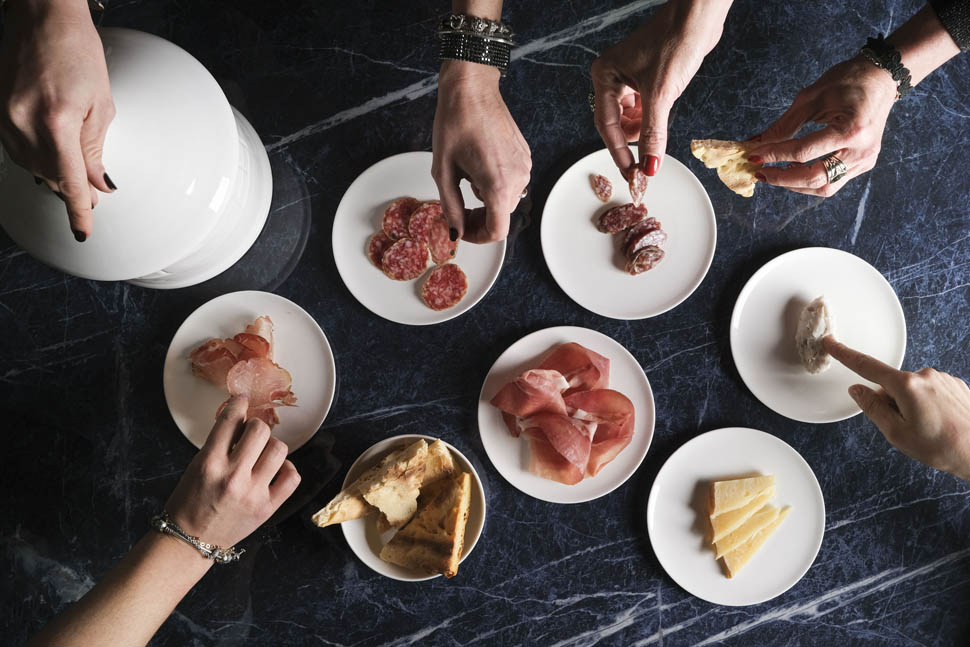
There are no strict rules here: guests choose according to their current mood, building their own journey or relying on the kitchen's confident guidance.
The restaurant
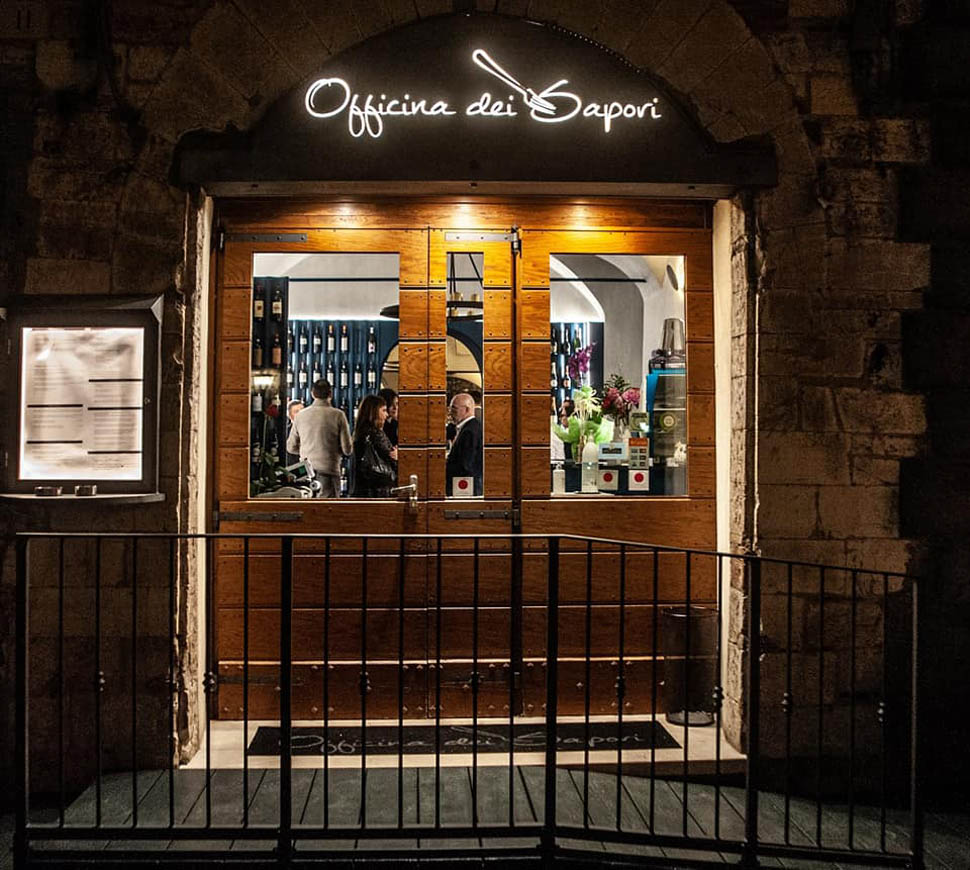
Some visit Gubbio just for a photo in front of the "Bar di Don Matteo," the open-space set of the eponymous TV series, while others come to capture a shot of the largest wooden barrel in Europe (a semi-hidden attraction tucked away in the alleys outside the town center). Either way, the uphill sections of this "vertical town" inevitably spark a certain hunger. That's where Officina dei Sapori comes in, located just a few meters from the Saonda stream, which cuts through the network of shops, squares, and small churches, adding scenic charm to the village. We're right in the heart of the historic area, making it the perfect spot for a refreshing break at the end of a stroll. From the outside, the sign has the look of a quaint traditional inn, but inside, it's a modern "aquarium" where contemporary cuisine swims freely.
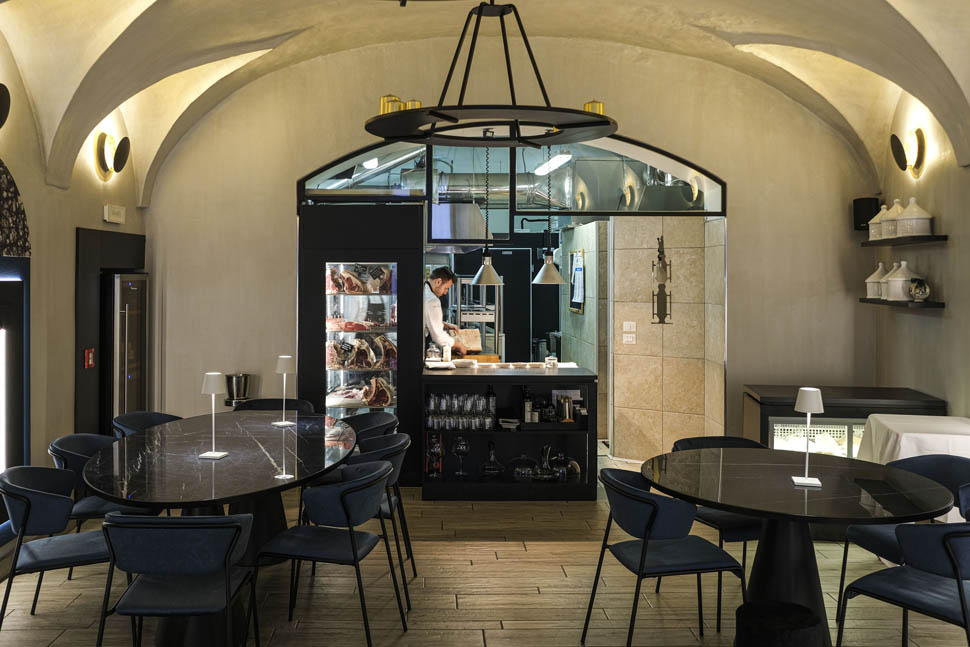
With blue-hued dining areas and seats, a dry-aging chamber with meats on full display, and a live kitchen just a step away from the tables, you quickly get used to the dynamic atmosphere as the Ramacci siblings work their magic. You might start by chatting with Veronica about Umbrian lifestyle and the local artistic gems, and then Giacomo shows up—the one who took the family dream seriously. "For me, a cannelloni or tagliatelle with truffle captures that timeless 'know-how.' It's like a draft with the essential elements in place, waiting for you to refine it. So I keep the framework of the past intact and refine the details from there, one ingredient at a time.
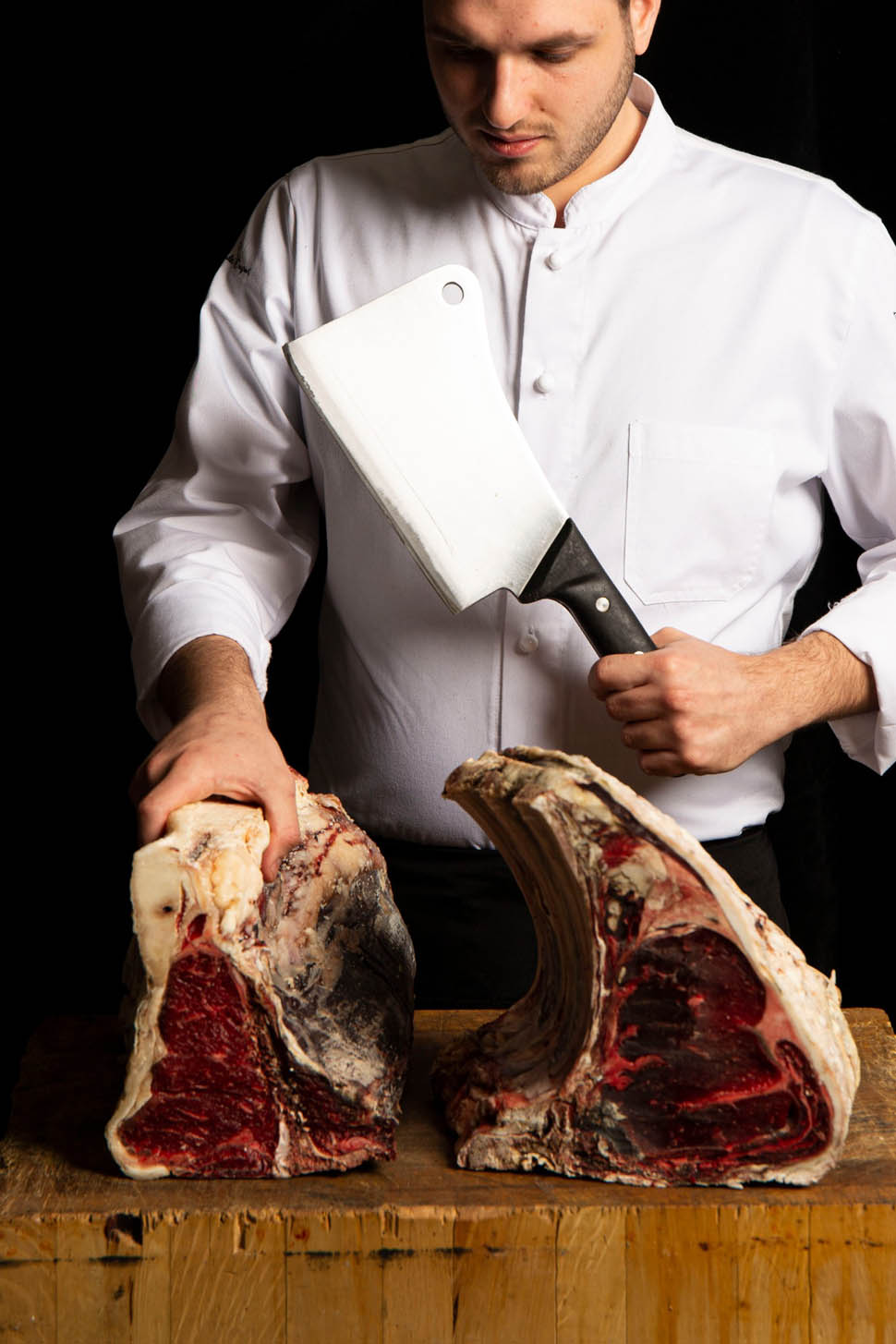
As for the cannelloni, we've kept it on the menu. But we like to think it encapsulates decades of craftsmanship in one pure flavor." More than that, he adds, "Many traditional local dishes are actually 'green-based,' designed to highlight legumes, olive oil, and seasonal produce. So in addition to the main menu, we offer a dedicated one inspired by the garden, entirely free of animal proteins." That's why Officina dei Sapori stands out as one of the few gourmet spots in the region to offer an entirely plant-based tasting menu.

The dishes
Giacomo's introduction is an enticing one, reinforcing the theory just mentioned about traditional practices: following a parade of local snacks (like the phyllo tartlet framed by liver pâté, or the bao with herb-infused salsa verde), comes none other than "lardo e ciccioli," the classic spread from home gatherings, reimagined with a unique twist. Here, the lard feels fresh and light, thanks to a serving temperature that's lower than usual, allowing its flavors to gradually bloom as you spread it on the unsalted bread. The lamb coratella, wrapped in its own intestines and pig caul, reveals its ambitions.

Grilled directly instead of pan-fried, to highlight the contrast between a meltingly soft interior and a roasted exterior, it arrives at the table garnished with a dusting of finely sliced truffle, for a tantalizing glimpse that piques interest. Here, the chef revitalizes the "still life" of offal and root vegetables that once graced the Sunday family meal, giving a new sheen to these humble dishes. Notably, underneath, you'll find Jerusalem artichoke in two forms: as a purée and as a base made from its skins. Everything is harmonized by a pear and mustard sauce, balancing softness with a touch of heat. The nostalgia for "Granny dishes" is swept away by the Stuffed Cannelloni, halfway between pasta and roast chicken.
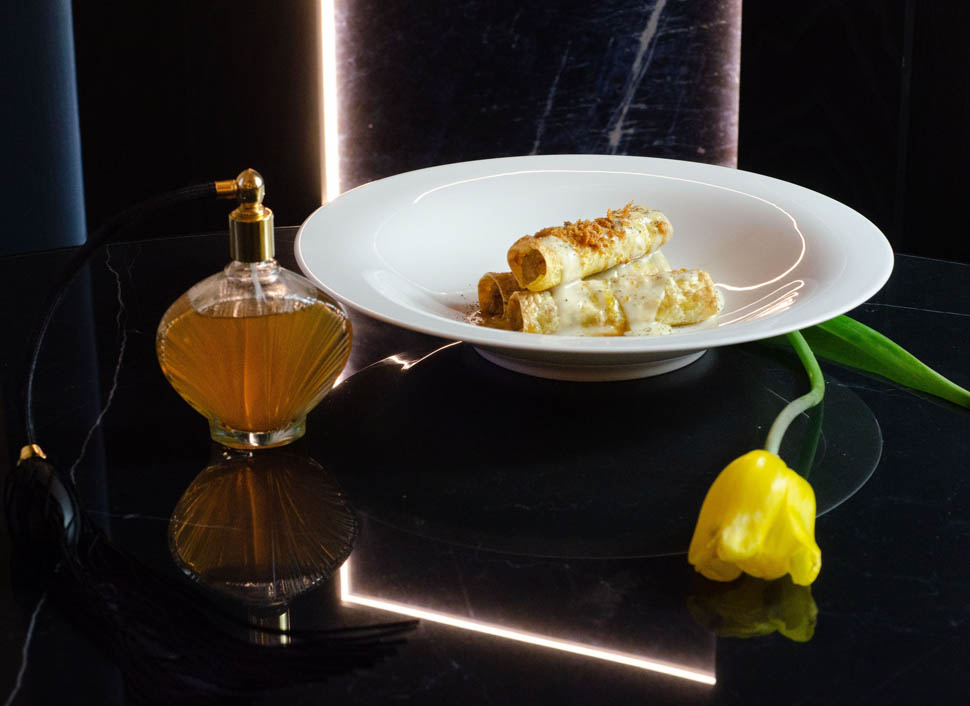
"I wanted to combine two recipes into one," explains the chef. The play on textures continues, this time with a combination of crust, filling, and sauce. "During cooking, the skin that covers the chicken and the thin sheet of cannelloni react the same way, turning into a thin roasted layer." From theory to practice, Giacomo unites the signature dishes of both grandmothers, taking a creative third path: the béchamel is made with hazelnuts to emphasize that delightful roasted aroma that evokes childhood homes. There's even powdered rosemary for the occasion: memory with a scent of the present. Did someone mention prosciutto? But don't imagine the usual charcuterie board—the kitchen goes further, using pork fat to create a base flavoring for a dish with a long-lasting aftertaste.
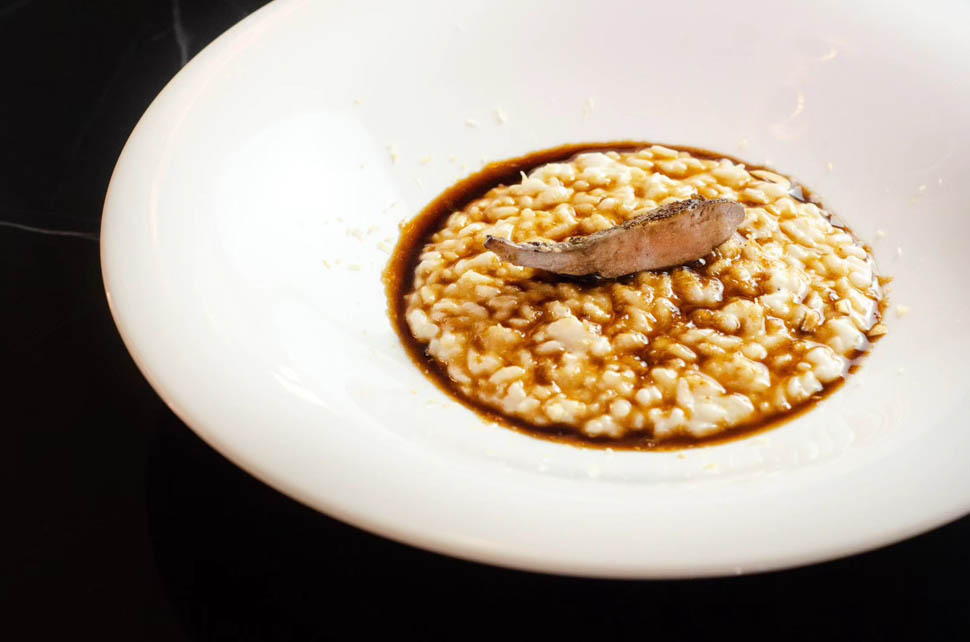
"We chose a leftover that's used as a basic seasoning, according to traditional folk practices," the chef explains. The lipid content is added during the risotto's creaming process, topped with partridge breast and crunchy almonds. Pleasantly wild, pure game. Meanwhile, tasting the pigeon breast and thigh, along with a sauce made from its bones and a turnip ravioli stuffed with its livers, is a full embrace of protein. Not just for the flesh imbued with gentle aromas, washing away any bloody residue (the meat is marinated in raspberry vinegar, juniper, and rosemary for 12 hours), but also for the deep echoes of beetroot, which appears both in the ravioli's pasta and in a revitalizing gel used for the finishing touch.
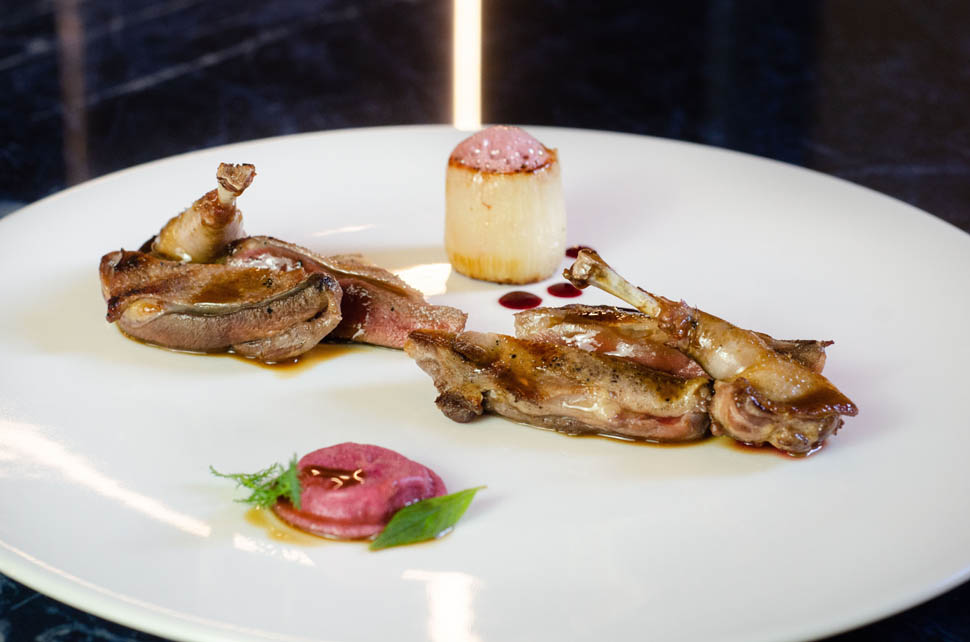
The smoky flavor reappears unexpectedly in the restaurant's best-selling dessert. It's a small phyllo pastry roll made with butter and honey, filled with a chantilly cream that instantly hits the nose with a whiff of a lit cigar. "We connect this to a smoker that directs the smoke straight into the mixer," reveals the talented pastry chef Lorenzo Pisapia. "On top, there's a red fruit gel with a touch of bourbon." So here's cigar and whiskey: the post-dinner ritual sublimated into a single bite.
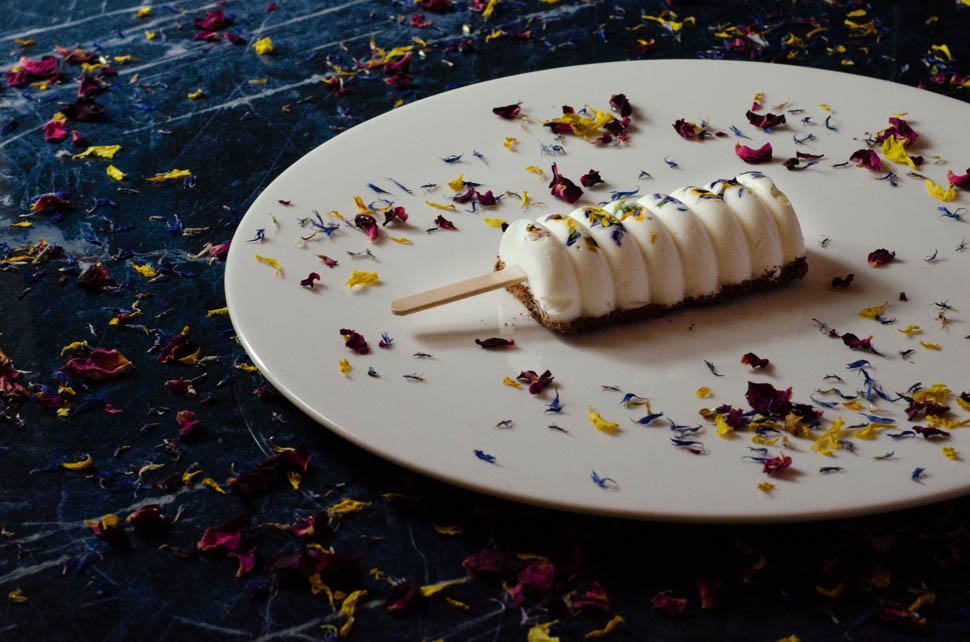
Contacts
Officina dei Sapori
Via dei Consoli, 13, 06024 Gubbio PG
Phone: 075 927 1424
